Microfluidics (Microfluidics) integrates basic operation units such as sample preparation, reaction, separation, and detection in biological, chemical, and medical analysis processes onto a single micron-scale chip to automate the entire analysis process. Due to its great potential in the fields of biology, chemistry, medicine and other fields, it has developed into a new research area where biology, chemistry, medicine, fluids, electronics, materials, and machinery intersect.
This article first introduced the principle of microfluidics and the working principle of the microfluidic chip, followed by a detailed description of the microfluidic chip technology, and finally introduced the application of the microfluidic technology in biomedical applications. Learn about.
Microfluidic technology principleMicrofluidics (microfluidics) is a scientific technology that precisely controls and manipulates microscale fluids and manipulates fluids in micro- and nano-scale spaces. It has the basic functions of biological and chemical laboratories such as sample preparation. The ability to react, separate, and inspect microscopically to a few square centimeters on a chip. The basic features and greatest advantages are the flexible combination and scale integration of multiple cell technologies on an overall controllable micro-platform. It is an interdisciplinary discipline that covers engineering, physics, chemistry, microfabrication and bioengineering.
Microfluidics is the scientific science of the system. It uses tens to hundreds of micron-scale pipelines to process or manipulate very small (10* to 10 to 18 liters, 1 to 3 cubic millimeters to 1 cubic micron) fluids. The original microfluidic technology was used for analysis. Microfluidics provides many useful functions for analysis: Using very few samples and reagents to make high-precision and high-sensitivity separations and detections, with low cost, short analysis time, and small footprint of analytical equipment. Microfluidics utilizes both its most obvious features, small size and the use of less obvious microchannel fluid characteristics, such as laminar flow. It essentially provides the ability to centrally control molecules in space and time.
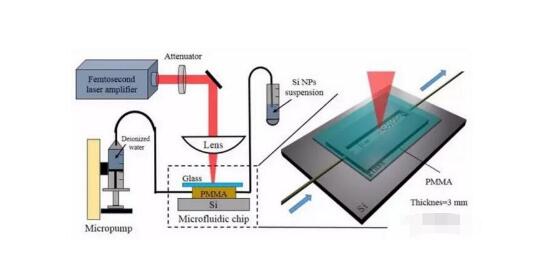
The microfluidic chip adopts a semiconductor-like microelectromechanical processing technology to build a microfluidic system on a chip, and the experiment and analysis process is transferred to a chip structure composed of interconnected paths and liquid chambers, and after loading the biological sample and the reaction solution , using micro mechanical pumps. Electrohydraulic pumps, electroosmotic flow, and other methods drive the flow of buffers in the chip, form microfluidic channels, and perform one or more continuous reactions on the chip. Many detection systems such as laser-induced fluorescence, electrochemical and chemical detection systems, and mass spectrometry and other analytical methods have been used in microfluidic chips for rapid, accurate, and high-throughput analysis of samples. The most important feature of microfluidic chip is that it can form a micro total analysis system with a multi-function integrated system and a large number of composite systems on one chip. Microreactors are commonly used in microarray labs for biochemical reactions, such as capillary electrophoresis, polymerase chain reaction, enzyme reactions, and microreactors for DNA hybridization reactions. Among them, the voltage-driven capillary electrophoresis (CE) is relatively easy to implement on the microfluidic chip, and thus has become the fastest growing technology among them. It etched the capillary channel on the chip, and the electrophoretic sample flowed through the channel to complete the detection and analysis of the sample. If the capillary array is built on the chip, hundreds of samples can be completed in a few minutes. Parallel analysis.
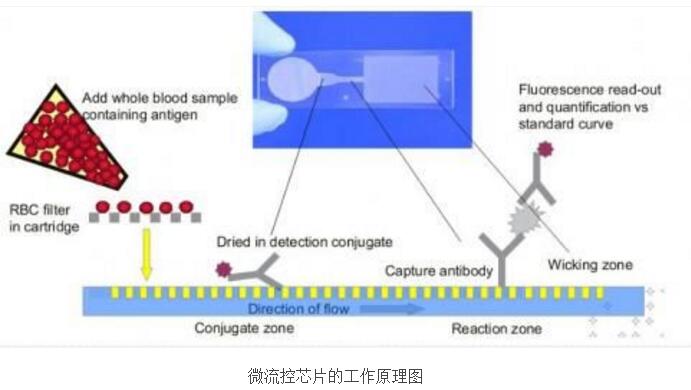
1, microfluidic chip matrix material
The matrix material is the carrier of the microfluidic chip. At the early stage of the development of the microfluidic chip, silicon material has been widely used as the first choice material for constructing the microfluidic chip, which is mainly attributed to mature semiconductor technology. However, as the research continues to deepen and the application area continues to expand, it exhibits varying degrees of limitations: silicon materials are semiconductors that cannot withstand high voltages. In addition, silicon materials are opaque and incompatible with optical inspection techniques.
Glass materials have good electroosmotic properties and excellent optical properties. They are very suitable for the fabrication of microfluidic chips in terms of their physical and chemical properties, but their lithography and etching techniques are complex and time-consuming. The production cost is too high, these factors restrict the application and promotion of glass microfluidic chips.
Therefore, the researchers began to pay more attention to the high molecular weight polymers that are cheap in raw materials and simple to process. At present, organic polymers are represented by polydimethylsiloxane (Polydimethylsiloxane-PDOX). The material has become a hot topic in microfluidic chip research. PDMS shows a very good material properties: good insulation, can withstand high voltage, and has been widely used in the production of various capillary electrophoresis microchips; high thermal stability, suitable for Processing a variety of biochemical reaction chips; with high biological compatibility and gas permeability, can be used for cell culture; also has excellent optical properties, can be applied to a variety of optical detection systems; low elastic modulus, suitable for production Microfluidic control devices, such as pump membranes. In addition, PDMS can also form a good seal with many materials such as silicon, silicon nitride, silicon oxide, and glass. In addition, the more commonly used high-molecular polymers include polymethylmeththacrylate (PMMA), polycarbonate (PolyCarbonate, PC), and the like.
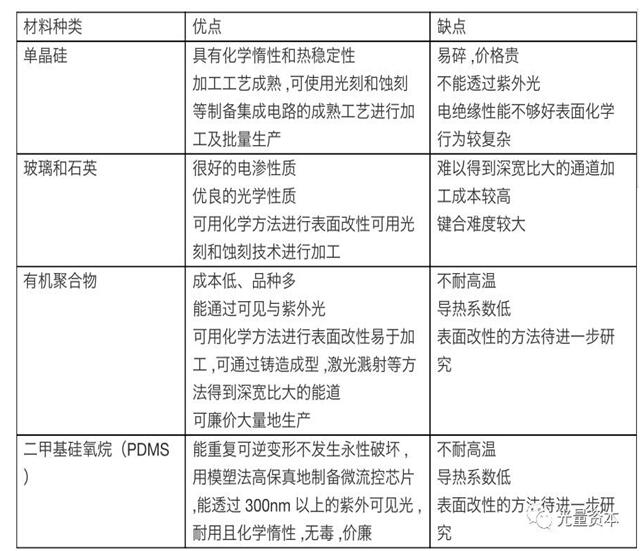
2. Microfluidic chip processing technology
Microfabrication technology is a precondition for the development of microfluidic chips. Microfluidic chip production technology first originated from lithography (Lithography) and etching (Etching) widely used in the manufacture of semiconductors and integrated circuit chips, and has been widely used nowadays. Fabrication of microfluidic networks on substrates such as silicon wafers, glass and quartz. The micro-manufacturing process is as follows: firstly, a mask including a microfluidic chip pattern is prepared through an optical plate lithography technique, and the prepared mask is usually a quartz glass plate plated with a chromium layer; A layer of photoresist was applied, exposed to ultraviolet light, and developed. After the above work is completed, the chip is etched with the corresponding etchant, and after the etching is completed, the remaining photoresist is removed to obtain the desired chip microstructure. This method has a long process cycle and high production costs, but its micro-machining technology is very mature.
Unlike silicon wafers and glass materials, there are a large variety of macromolecule polymers that can be used in microfluidic chip processing, and the physicochemical properties of the materials are very different, so their microfabrication technology shows a certain degree. Diversification, there are currently molding, hot pressing, LIGA technology, laser ablation technology and soft lithography.
aã€InjecTIon Molding
Refers to the manufacture of raised microfluidic chip positive mode through photolithographic masking technology. Then the liquid polymer is poured on the positive mold. When the polymer is completely cured, it can be peeled off from the positive mold. For substrates with a microfluidic network, polymer materials that are suitable for molding should have very low viscosity and low curing temperatures, such as PDMS, epoxy, and PTFE.
b. Hot pressing method
It is also a microfluidic chip manufacturing technology that requires a positive mold, which mainly utilizes the glass transition temperature of the high molecular polymer. Compared with the molding method, the hot-pressed microchannels have poor reproducibility, and the pipelines are easily deformed and the operating conditions are relatively harsh. This method is mainly applied to the processing of thermoplastic materials such as PMMA and PC.
c. Laser AblaTIon
Is a new type of micro-processing technology, which is a high-molecular polymer by UV laser degradation, suitable for laser ablation processing of materials such as PMMA, polystyrene, nitrocellulose.
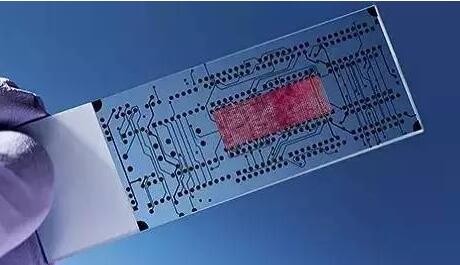
3, microfluidic chip microfluidic control technology
Microfluidic manipulation technology is one of the most important areas of research in microfluidic chip technology. It drives and controls fluids through various mechanical or non-mechanical forces. According to whether there are mechanical moving parts in the microfluidic driving system, it can be divided into mechanical and non-mechanical driving systems.
a. Mechanical drive system
Mainly includes piezoelectric micro-pumps, electrostatic micro-pumps, etc. It mainly through the electrostatic, piezoelectric and other different methods to trigger the movement of the mechanical parts, thus providing a source of power for the micro-fluid, the advantage of this pump is that any fluid can be Push, but the fluid it drives is pulsed rather than continuous.
b. Non-mechanical drive system
Mainly include electroosmotic pumps, thermo-capillary pumps, etc. Among them, electroosmotic pumps are the most commonly used driving force in microfluidic chip systems. Compared to micro-mechanical pressure driven pumps, electroosmotic pumps have many advantages: The osmotic pump is easy to make and does not have any moving parts. The sample column of the electroosmotic pump has only a small amount of diffusion. In addition, the method of changing the microchannel wall x (potential) can be used to further control the amount and direction of the electroosmotic flow.
4, microfluidic chip detection technology
The structural characteristics of the microfluidic chip determine the specificity of its detection technology. Compared with traditional detection instruments, the microfluidic chip puts forward higher requirements for its detection system, such as high sensitivity, fast response, and parallel analysis. Functional and portable features, many detection technologies based on different principles have been applied to the research of microfluidic chips, mainly including optical detection, electrochemical detection, mass spectrometry and other methods.
a, optical detection
Optical detection is the most widely used type of microfluidic chip detection method, and its advantages are high sensitivity and practicality, and the detector and the analysis object do not need direct contact. Among them, Laser Induced Fluorescence (LIF) is one of the most sensitive detection methods. Its sensitivity is 10-9 mol/L~10-12 mol/L. For some molecules with high fluorescence efficiency, the detection ability can be It reaches the single-molecule level, so it is also the only detector currently used in commercial microfluidic systems. However, the detection equipment is expensive and bulky, and it does not match with micro-fluidic microfluidic chips, which limits its widespread application and application to some extent.
b. Electrochemical detection
The detection system based on electrochemical detection principle can be said to be one of the most complete, most integrated and ideal chip detection systems. There are two main reasons for this: On the one hand, the manufacturing technology of microelectrodes and the current microfluidic chip The processing technology is fully compatible and can realize mass production; on the other hand, electrochemical detection has the advantages of high sensitivity, good selectivity, freedom from the influence of the optical path and sample turbidity, etc., and requires only minimal peripheral auxiliary equipment. To achieve rapid detection, Figure 1 shows a portable electrochemical detection system. Undoubtedly, the chip detection technology based on the electrochemical principle represents an important development direction of the future chip detector, showing great application value and potential.
c, mass spectrometry detection
Mass spectrometric detection technology as an important means of biochemical analysis, because it can provide the basic structure and quantitative information of biomacromolecules in the sample components, so it shows great potential in microfluidic chip detectors, but the current mass spectrometry detection bottlenecks The problem lies in the interface between the mass spectrometer and the microfluidic chip.
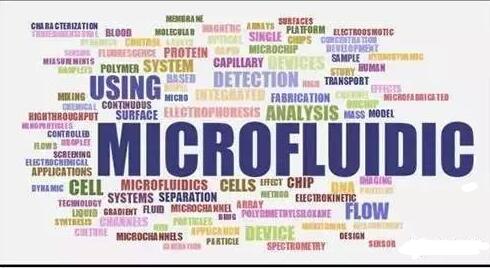
From the perspective of the analytical performance of the microfluidic chip, its future application areas will be very extensive, and its application areas are still expanding, but the current focus is obviously in the biomedical field. In addition, high-throughput drug synthesis and screening, environmental monitoring, food hygiene, criminal science, and defense will also become important applications. Only three examples of microfluidic chip applications in biomedical applications illustrate the great potential of microfluidic chip systems:
1. Capillary electrophoresis separation
Capillary electrophoresis chip is the earliest and fastest developing chip technology in microfluidic chip, which has become the most eye-catching branch in the field of microfluidic chip. Compared with traditional capillary electrophoresis, it has features such as high degree of automation, low sample consumption, fast analysis speed, and high throughput, and it has been shown to be superior in the analysis of biological macromolecules such as DNA fragments, peptides and proteins. Separation and analysis capabilities are considered to be one of the most promising segregation analysis methods in the post-genomic era that can hopefully overcome scientific problems such as protein research and clinical diagnosis of genes.
Manz A published the first paper on capillary electrophoresis chip in 1992. This article uses fluorescent dyes as the analysis object, electroosmotic flow as the fluid driving force, and successfully implemented fluid control in the microfluidic network of the chip. Capillary electrophoresis chip prototype and its superior separation and analysis capabilities, the results of this research has aroused widespread concern and interest in the academic community. Successively, various chips for the separation of amino acids, proteins, drugs, etc. have also been successfully developed. In order to further improve the analysis capability of the chip, the team led by Mathies recently integrated 384 capillary electrophoresis microchannels on a disc glass chip with a diameter of 200mm, and its effective separation length reached 8cm, for a base pair of 100bp. The ~1000bp gene standard marker achieves a resolution of better than 10bp, and a PCR-RFLP (restriction fragment length polymorphism) analysis of the 1163D variant gene was performed on this chip, providing a basis for clinical diagnosis.
Capillary electrophoresis microchips are the most industrialized and first commercialized chip in the microfluidic analysis chip. As early as in 1999, the United States Hewlett-Packard (now Agilent) and Caliper Tech-nologies jointly developed the first chip. Microfluidic chip commercial "2100 biochemical analyzer" has been put on the market, the system uses CAliper company's glass chip, using LIF detection, and with 5 to 6 kits used in conjunction with DNA, RNA Fragments and proteins were electrophoretically separated for detection. The size of the glass chip was 1.8 cm & TImes; 1.8 cm, and the effective separation length was about 1.6 cm. Twelve samples were separated and detected at the same time within 30 minutes. Compared with the traditional electrophoresis of genes and proteins, chip capillary electrophoresis eliminates the steps of gumming, staining, and decolorization of samples, and eliminates the time-consuming steps of drying and photography. At the same time, multiple samples can be rapidly tested to obtain electropherograms of genes and proteins. And curves. The entire test process is simplified into three quick and easy steps: loading the sample, performing the analysis, and observing the data.
2, gene sequencing
An important application area of ​​capillary electrophoresis is gene sequencing. It is precisely because the 96 capillary electrophoresis arrays are widely used in the sequencing work of the Human Genome Project that the process of the world-renowned Human Genome Project has been greatly accelerated. It is scheduled to be basically completed in 2003 by early 2000. In fact, from the principle of gene sequencing, chip capillary electrophoresis sequencing is identical to ordinary capillary electrophoresis sequencing, but the former shows greater advantages: first, the unique sample injection method and finer details due to capillary electrophoresis of the chip. Separation channel, so it can achieve rapid separation of DNA; on the other hand, microfluidic chips are manufactured using mature micromachining technology in the semiconductor industry, so more capillaries can be integrated on one chip for high-throughput sequencing; Because it realizes the integration of product processing and analysis and reduces human interference, it further reduces operating costs.
The team led by Mathies started DNA sequencing on microfluidic chips as early as 1995. They sequenced 150 bases on a chip with an effective separation length of 3.5 cm. They used chip denaturing capillary electrophoresis at 10 min. The measurement of the 433 base sequence was completed. The sequencing chip has a capillary length of 3.5 cm and a cross-sectional dimension of 50 μm & TImes; 8 μm. In order to further improve DNA sequencing capabilities, by 2001 they had etched 96 radiation-arranged capillary electrophoresis channel arrays on a round glass chip with a diameter of 150 mm. Since the chip was tested using a rotary scanning LIF method, Can achieve parallel sequencing, sequencing up to 500 bases.
3, PCR reaction
The function of the biochemical reaction chip is to reduce the biochemical reaction experiments conducted in a common laboratory to a small chip. The currently reported biochemical reaction chips mainly include polymerase chain reaction (PCR) chips and drug synthesis chips, among which PCR chips are typical representatives of biochemical reaction chips. As we all know, conventional PCR requires steps such as sample preparation, amplification, and detection, which is time consuming and laborious. When PCR amplification and related detection are performed using a microfluidic chip, the operation steps can be greatly simplified, and detection efficiency can be significantly improved. In 1993, Northrup et al. first reported a PCR chip using silicon wafers and glass as the matrix material, and demonstrated the feasibility of the PCR chip through experiments. The chip's reaction chamber is etched in a silicon wafer and has a volume of about a few microliters. The heater is also directly integrated on the chip. Compared with conventional PCR, the chip's thermal cycle efficiency is faster at the same amplification efficiency. ~ 10 times. In order to further improve the thermal cycling speed of the PCR chip, Kopp MU et al. developed a continuous-flow PCR chip with three different constant temperature ranges of 95°C, 72°C, and 60°C under the flow chip, as the sample flows through them. The automatic temperature change will be realized and the denaturation, annealing and extension reaction will be completed in the flow to achieve the purpose of PCR amplification.
In addition, once the PCR chip and the capillary electrophoresis chip are integrated, their advantages are even more pronounced. Lagally ET et al. fabricated a chip system with a valve, a hydrophobic hole, a PCR reaction cell, and a capillary electrophoresis (CE) on a glass chip. The volume of the PCR reaction cell was 280 nL. The template needed before the PCR amplification was performed. At a concentration of 20 copies/mL, the average number of DNA template molecules is only 5 to 6 in the reaction chamber. The heater and thermocouple are integrated on the back of the chip, and 20 cycles can be completed within 10 minutes. After the reaction was completed, the PCR reaction product was driven by an electroosmotic pump into a capillary electrophoresis chip for on-line CE separation analysis. The chip system integrates sampling, PCR amplification and CE separation, which saves reagent consumption, speeds up analysis, and avoids artificial contamination in experimental operations.
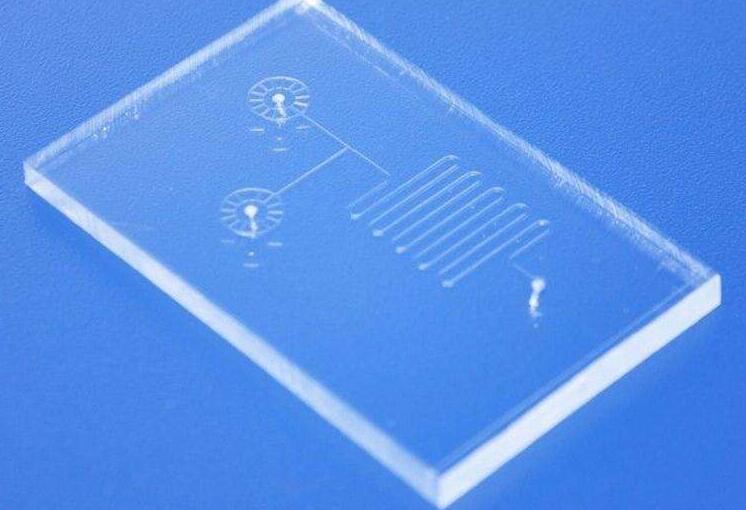
Laptop Stand Holder Adjustable,Laptop Stand Holder Desk,Laptop Stand Holder Ergonomic,Laptop Stand Holder Ergonomic Adjustable,etc.
Shenzhen Chengrong Technology Co.ltd is a high-quality enterprise specializing in metal stamping and CNC production for 12 years. The company mainly aims at the R&D, production and sales of Notebook Laptop Stands and Mobile Phone Stands. From the mold design and processing to machining and product surface oxidation, spraying treatment etc ,integration can fully meet the various processing needs of customers. Have a complete and scientific quality management system, strength and product quality are recognized and trusted by the industry, to meet changing economic and social needs .
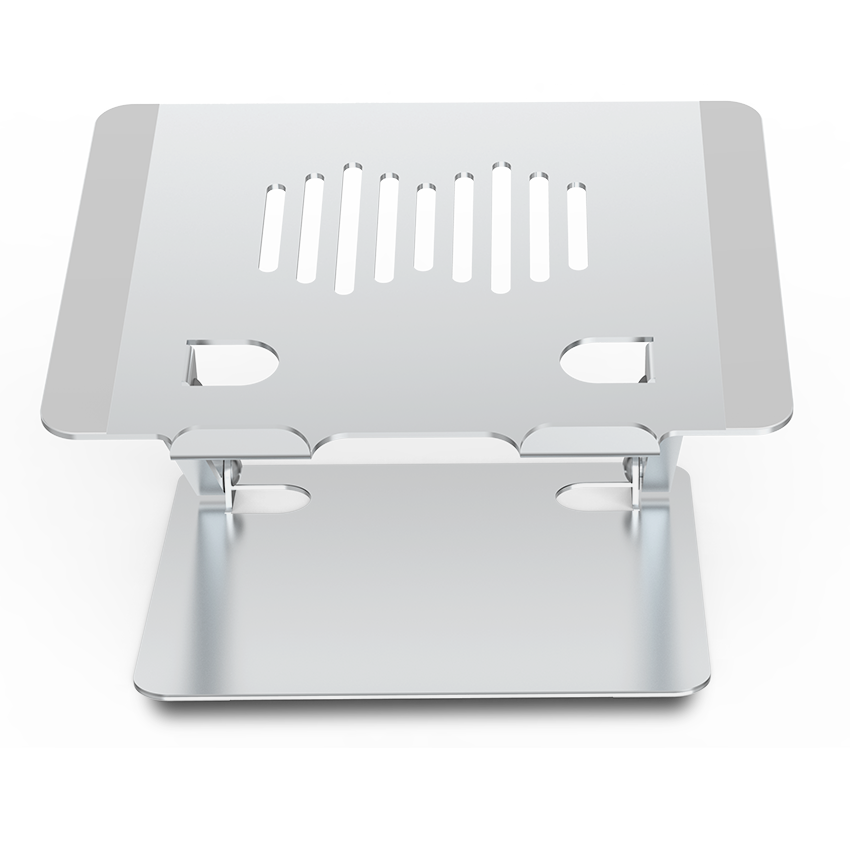
Laptop Stand Holder Adjustable,Laptop Stand Holder Desk,Laptop Stand Holder Ergonomic,Laptop Stand Holder Ergonomic Adjustable
Shenzhen ChengRong Technology Co.,Ltd. , https://www.dglaptopstandsupplier.com